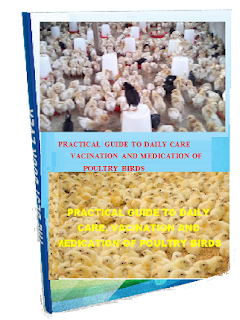Techniques For Corn Nitrogen Management
Beginning right to finish neatly when managing nitrogen in corn.
Corn nitrogen (N) response is influenced by means of precipitation frequency and depth. multiplied climate variability has prompted growers to pursue more suitable nitrogen ideas to tackle economic, social and environmental considerations regarding nitrogen administration. dangers associated with early-applied nitrogen loss have multiplied pastime in delayed nitrogen purposes to support synchronize nitrogen availability with corn nitrogen uptake. however, corn nitrogen uptake in advance of V6 emphasizes the magnitude of techniques to meet early nitrogen demands and hold yield skills until sidedress time.
Success of sidedress applications can rely upon seasonal climate patterns. When April – June rainfall turned into near regular to deficit, in-furrow purposes decreased grain yield up to 22 bushels A-1 when full sidedress changed into delayed from V4 until V10. Profitability became in a similar way decreased up to $79 A-1. reduced nitrogen prices required via the in-furrow placement were not capable of preserve yield potential until the V10 sidedress timing when rainfall was under usual.
an identical yield tendencies (besides the fact that children no longer statistically different) have been accompanied with the two-by using-2 nitrogen approach the place yield changed into reduced as much as 11 bushels A-1 when full sidedress become delayed from V4 except V10. unlike the in-furrow strategy, profitability in dry years turned into not reduced using the two-by means of-2 nitrogen strategy. besides the fact that children the in-furrow or 2-with the aid of-2 concepts frequently accomplished similar yields, each accelerated grain yield as much as 18 bushels A-1 in comparison to pre-plant integrated nitrogen.
When April – June rainfall became above typical (i.e., wet year), identical yields were executed when sidedress turned into delayed from V4 to V10 the usage of the in-furrow or 2-by using-2 nitrogen method. No yield difference counseled the chance of early utilized nitrogen loss (i.e., V4) in moist years changed into under the possibility of decreased uptake with late applied nitrogen (i.e., V10) in dry years. In a wet 12 months, chicken litter plus V10 sidedress provided a slowly attainable nitrogen supply and improved yield 17-27 bushels A-1 relative to the in-furrow or 2-with the aid of-2 options with V4 sidedress. Grower profitability the usage of poultry litter will depend on the cost effectiveness of the litter source.
One factor emphasized by means of the examine changed into the adage “birth right to finish smartly.” cover measurements collected at V6 indicated corn yield expertise changed into influenced early within the becoming season. Nitrogen management innovations (i.e., pre-plant incorporated, in-furrow, 2-through-2) ought to sufficiently supply nitrogen until sidedress timing to affect success of the in-season software (see photos). aside from fowl litter plus V10 sidedress in a wet year, no superb yield or profitability responses were accompanied when full sidedress changed into delayed until V10.
To enhance corn nitrogen recovery, multi-flow nitrogen application techniques are a recommended most effective management apply in Michigan. In 4 of six web page years, multi-circulate nitrogen innovations improved yield 9-30 bushels A-1 as compared to a single one-circulate nitrogen utility of urea or ESN/urea. while break up-nitrogen purposes often extended yield over a one-flow strategy, the in-furrow strategy multiplied risk as a result of decreased nitrogen charges and situation for seedling harm. the two-through-2 strategy allowed for extended starter nitrogen prices and provided a extra constant yield response throughout web site years.
Growers splitting their nitrogen purposes will cut possibility when applying sidedress at V4 and may need to believe late vegetative nitrogen sidedress timings as a rescue utility for northern corn production areas instead of a standard observe.



Comments
Post a Comment